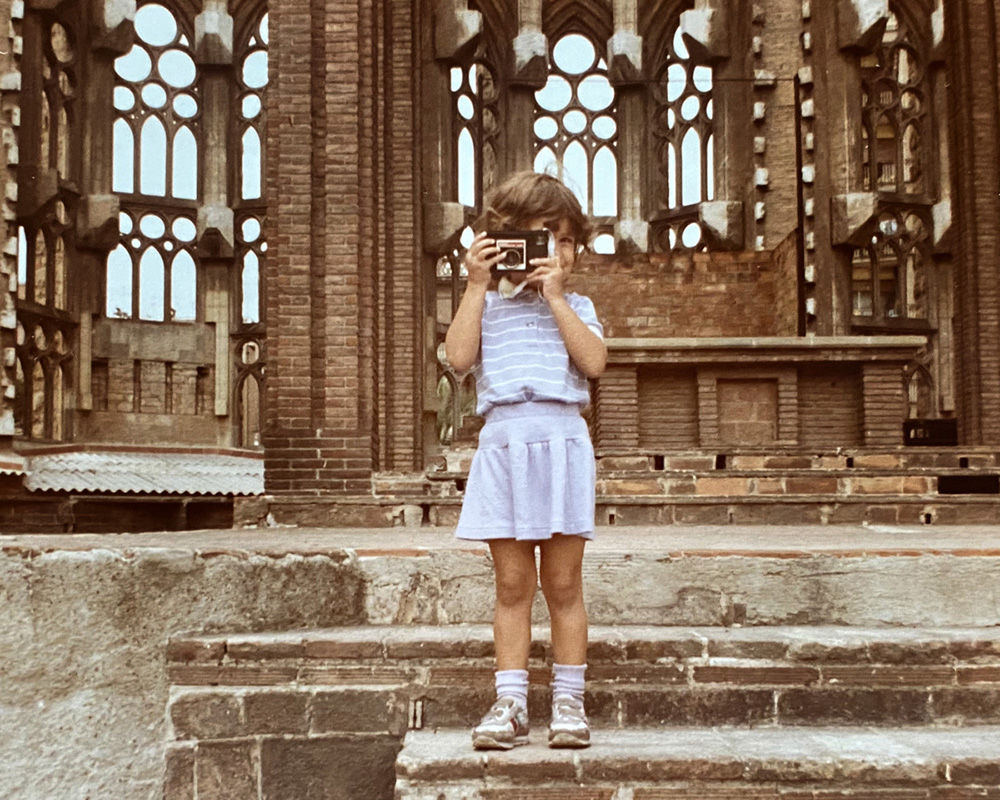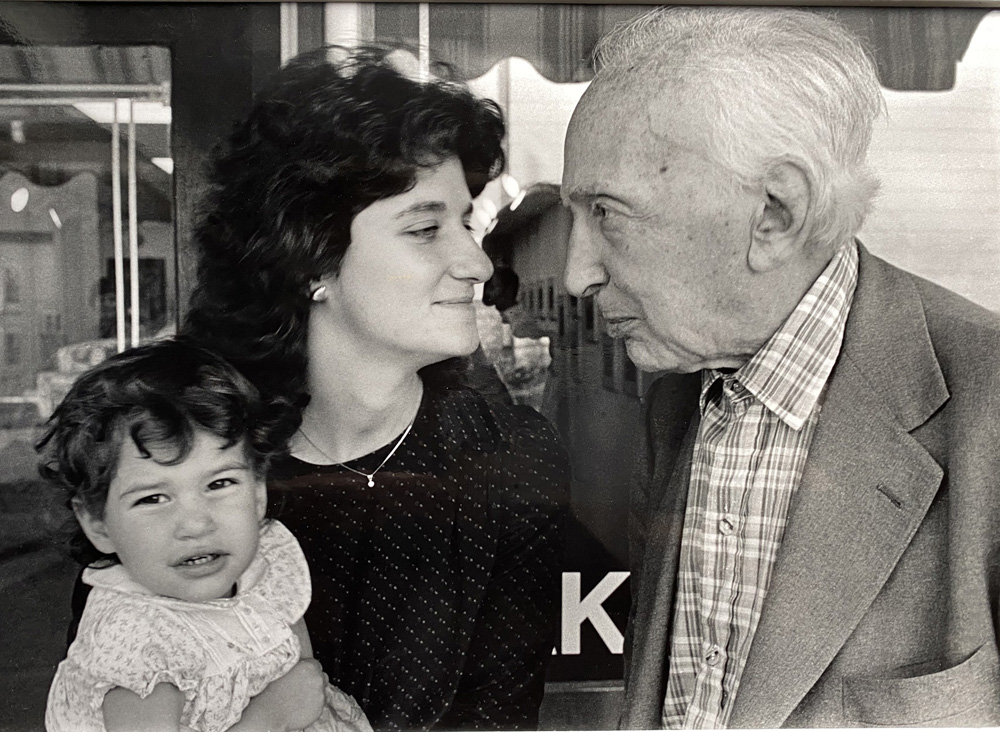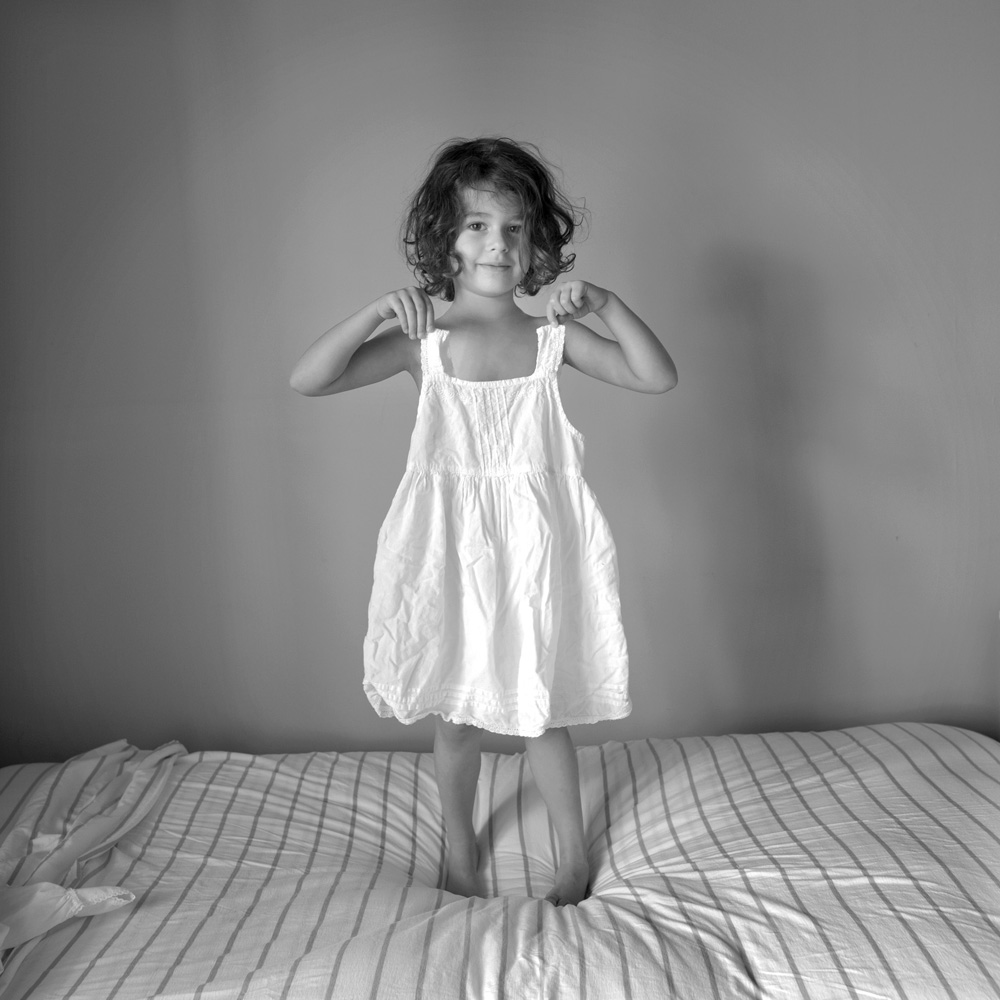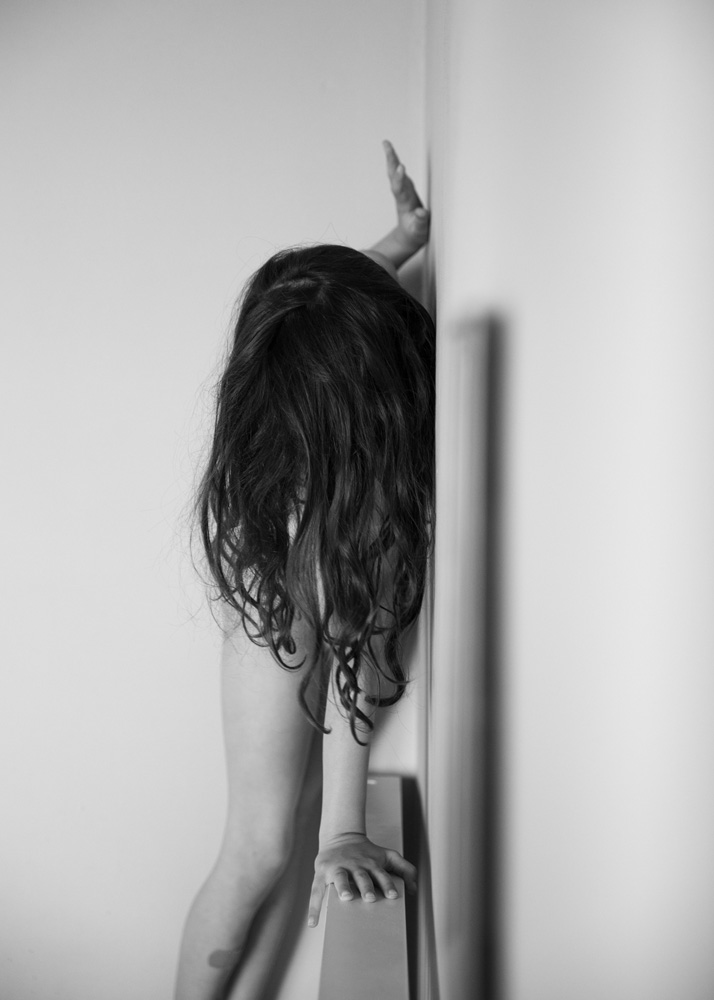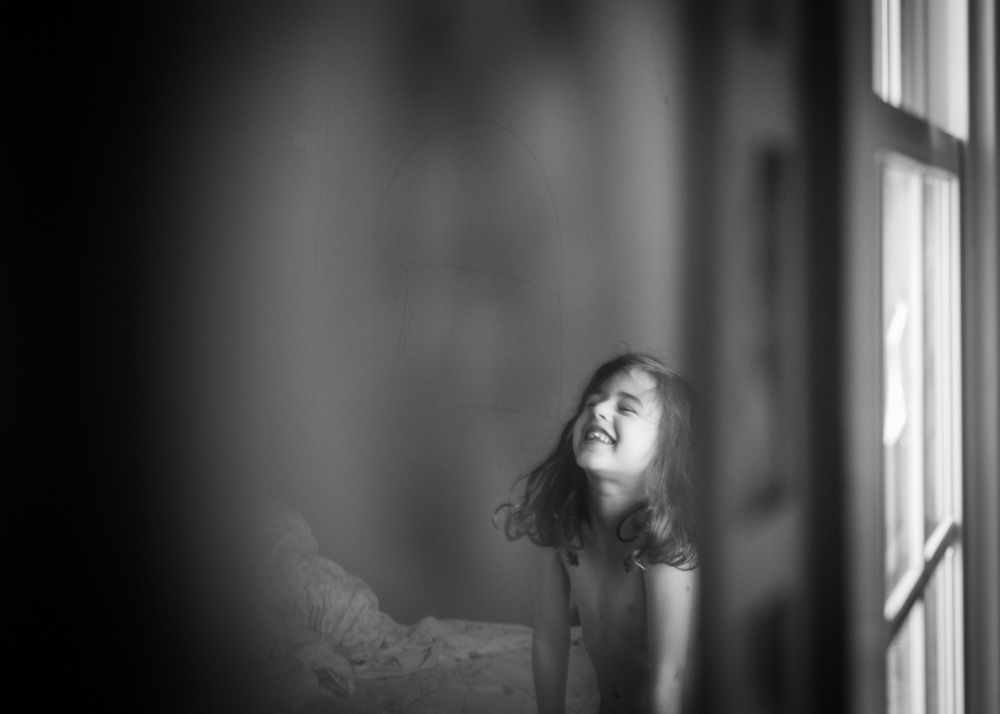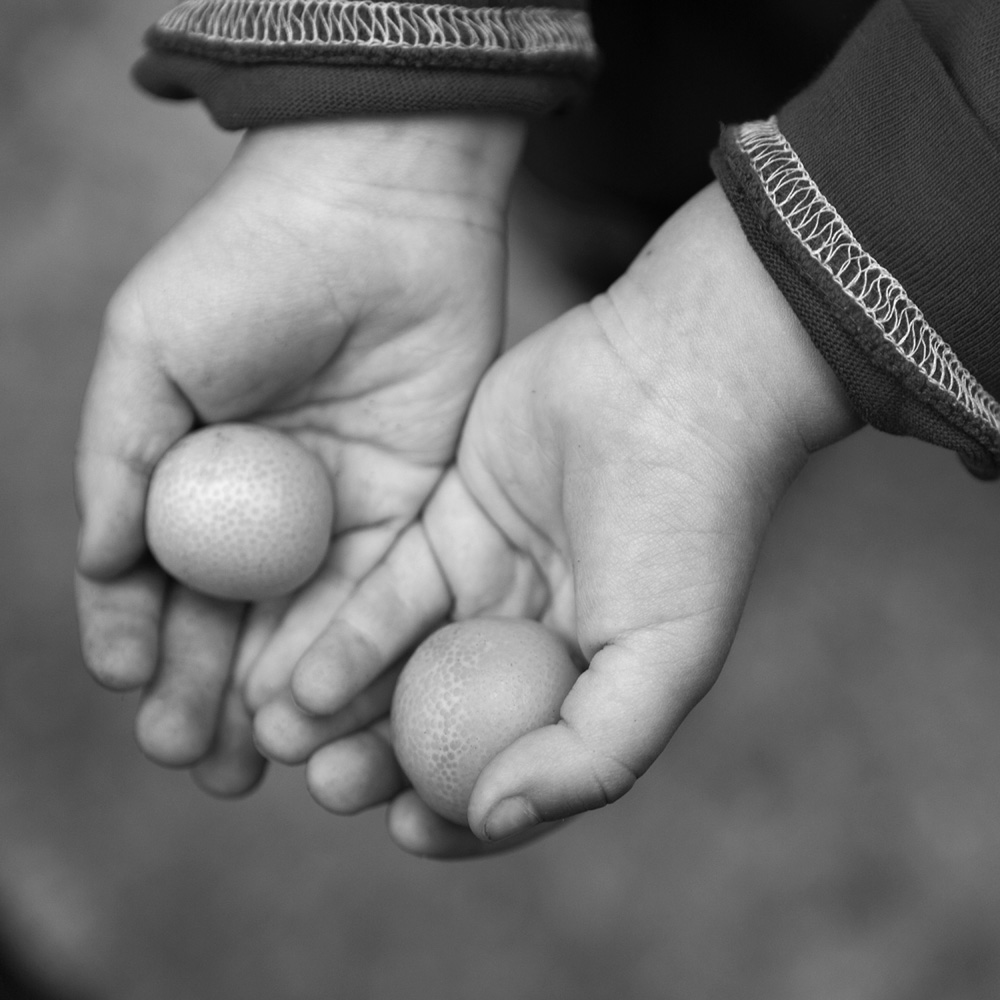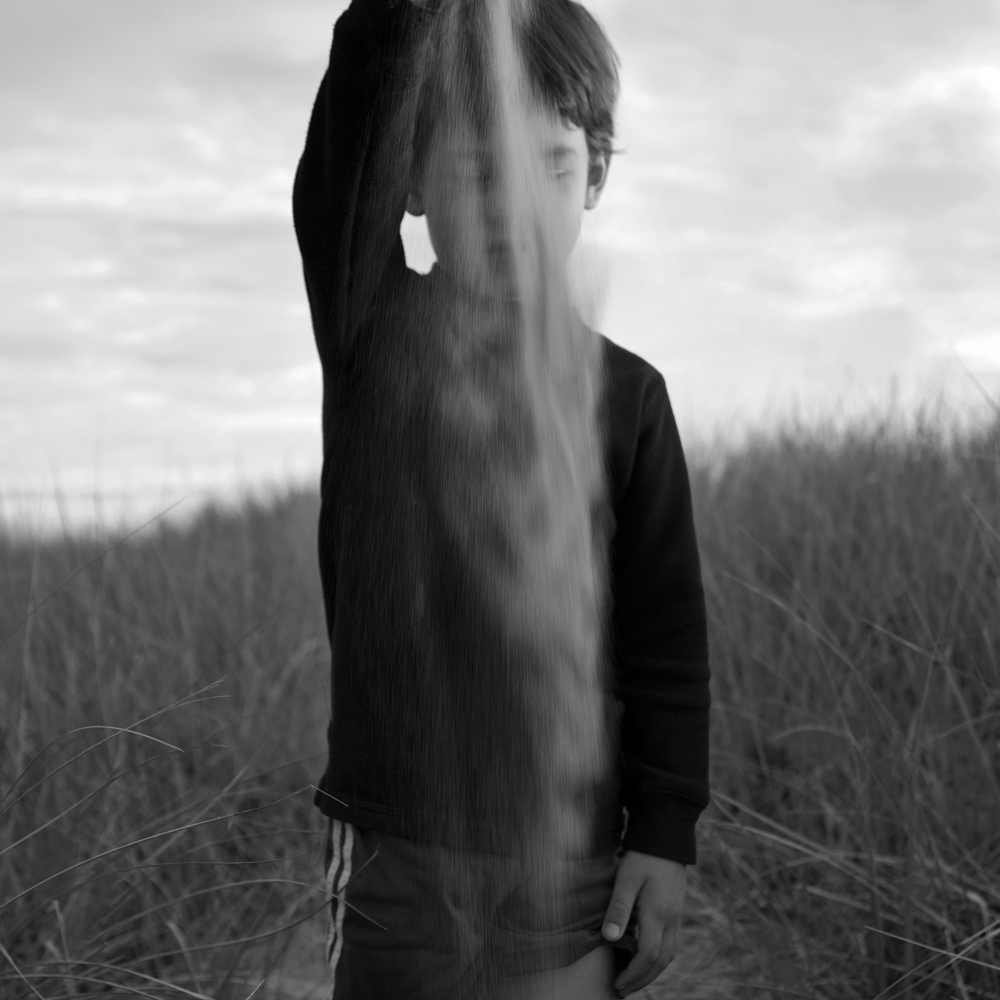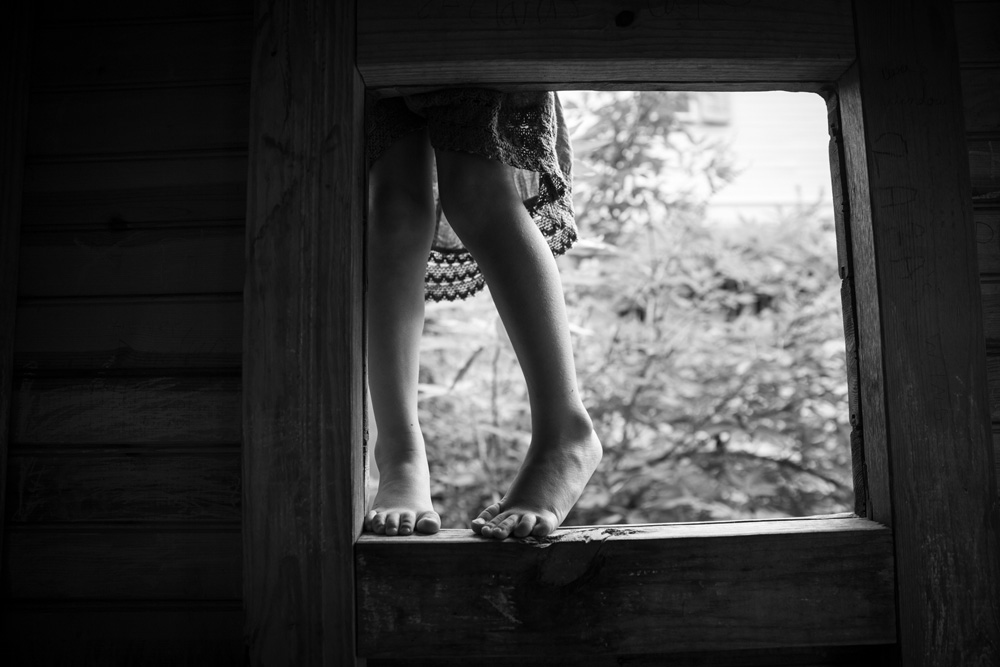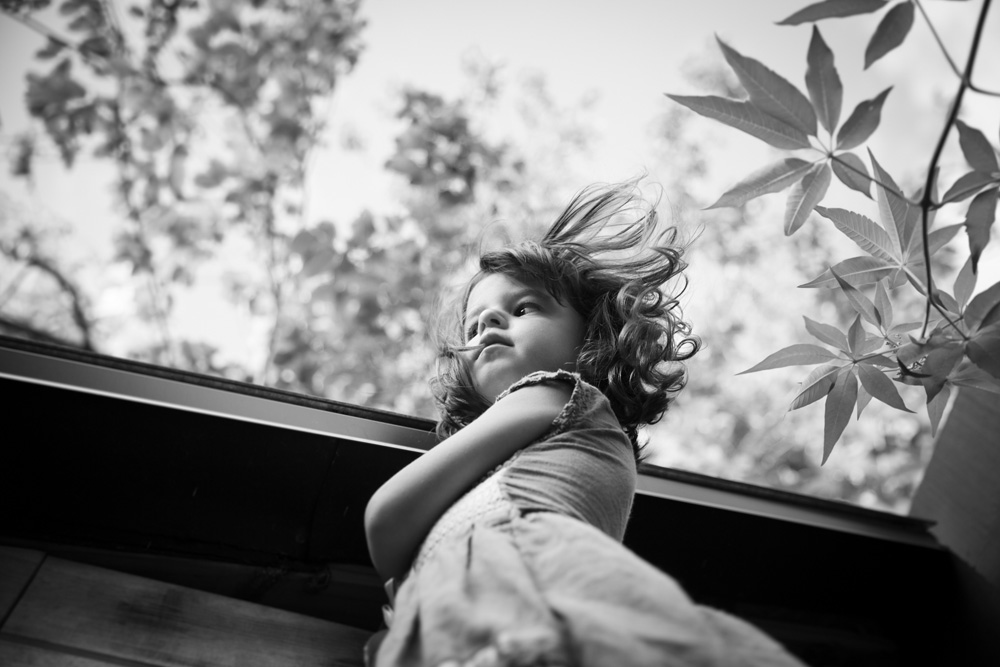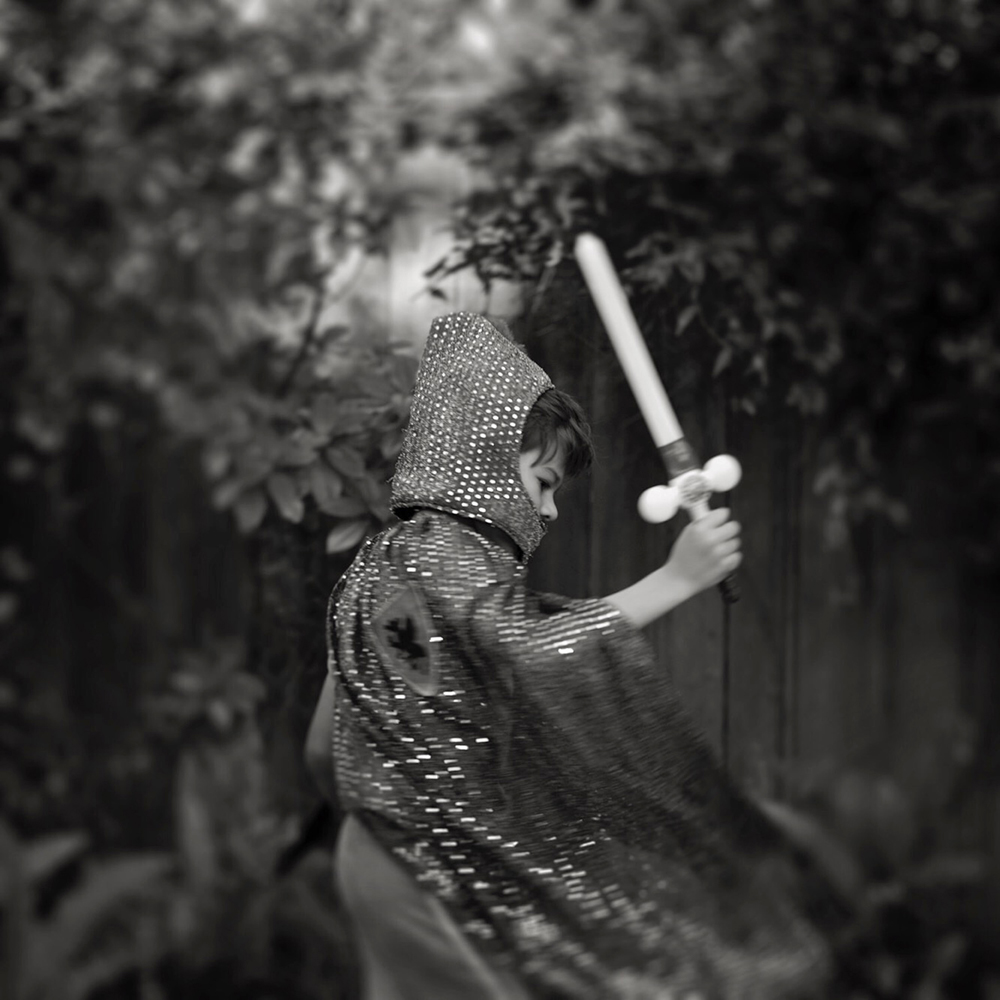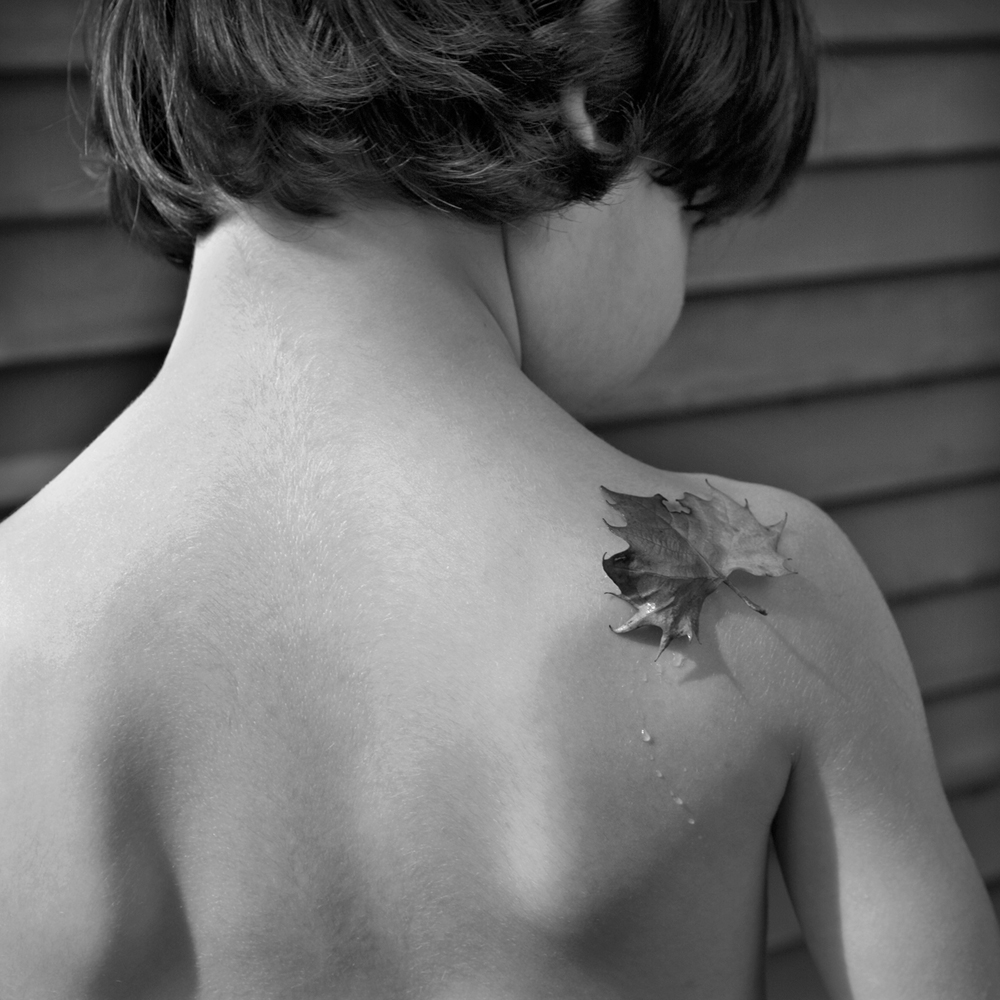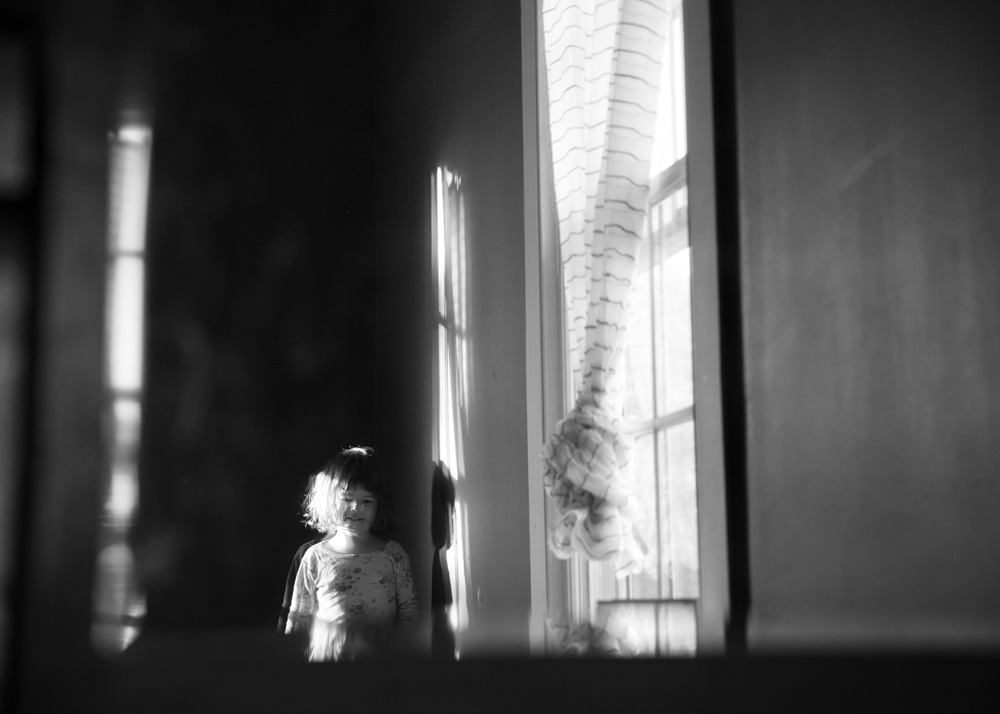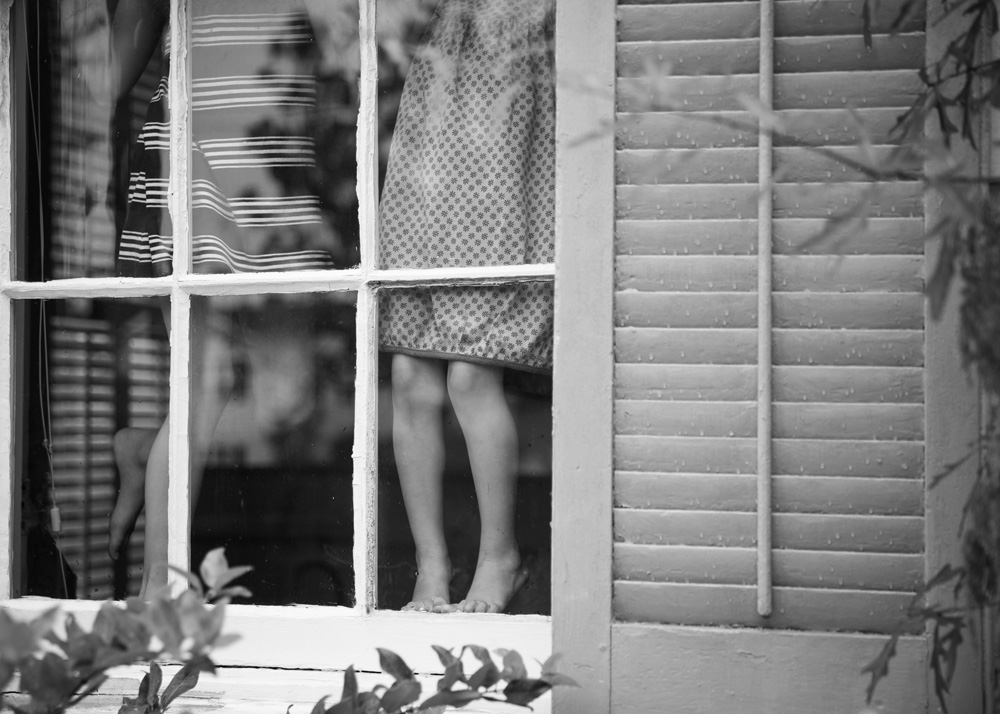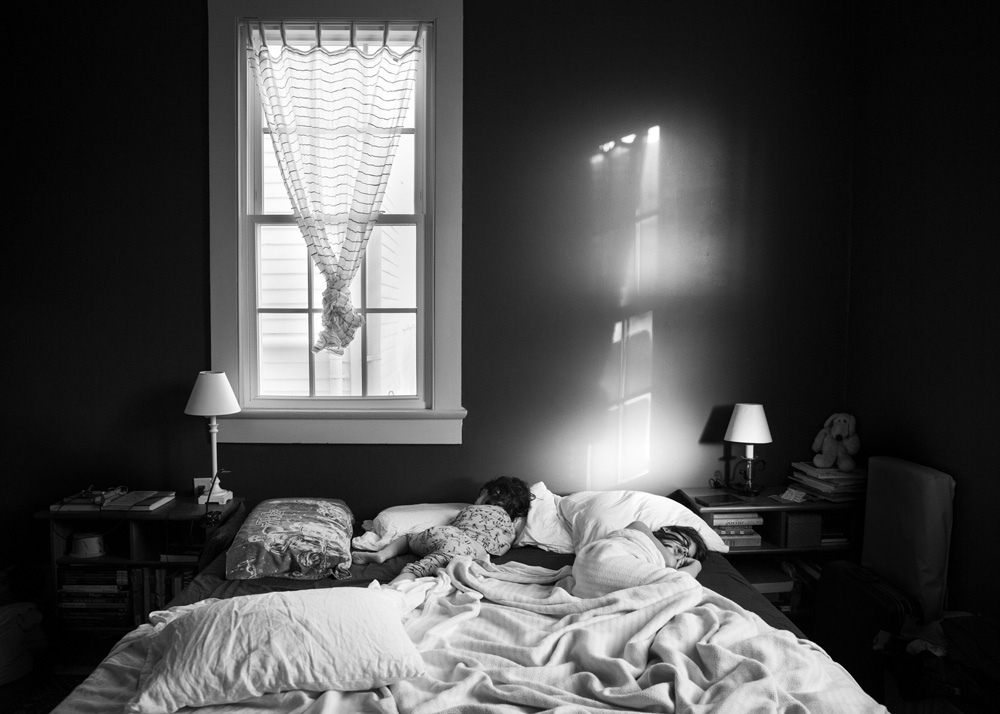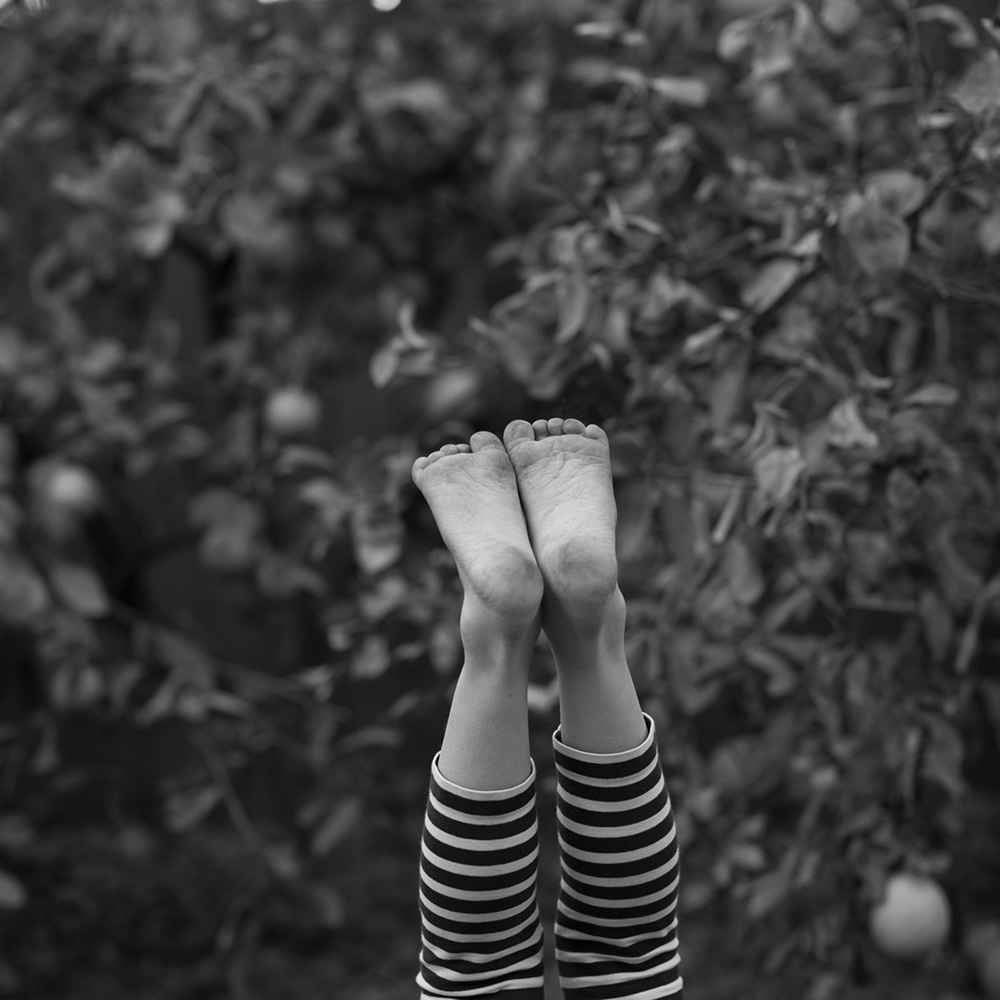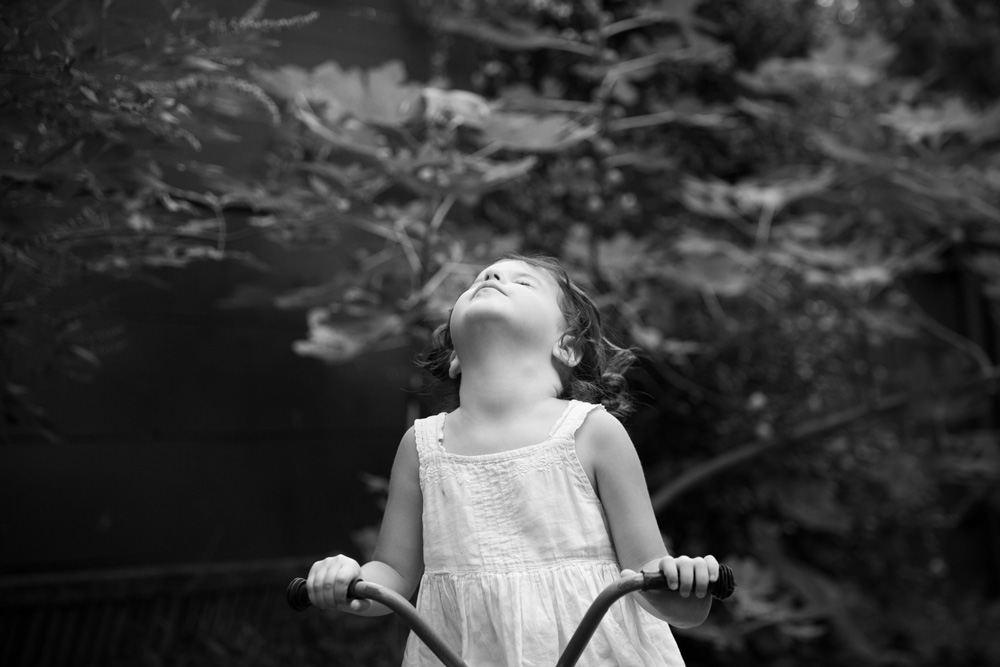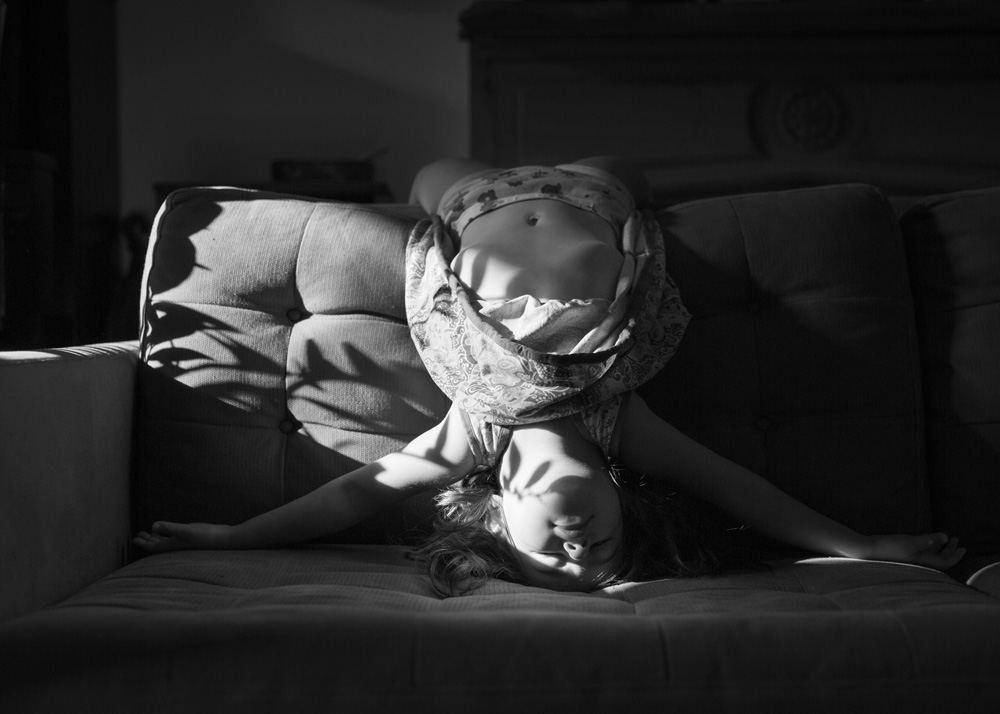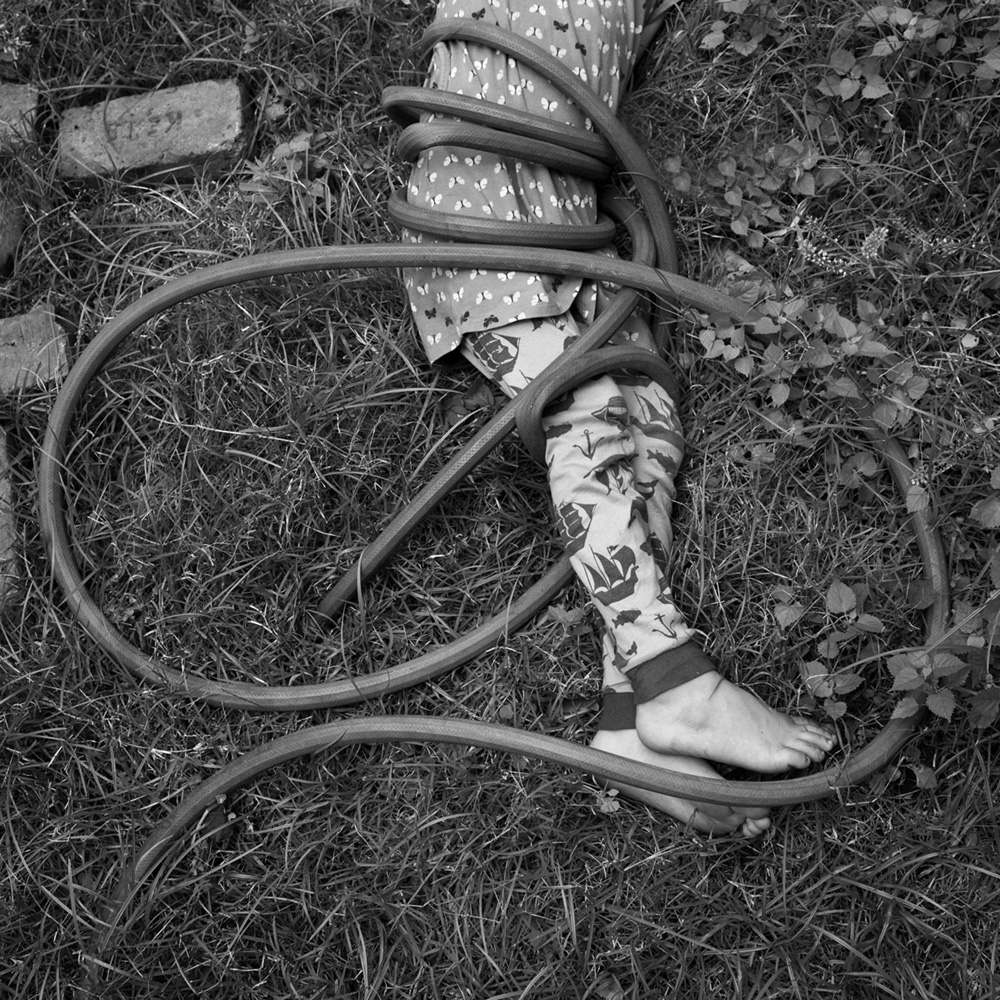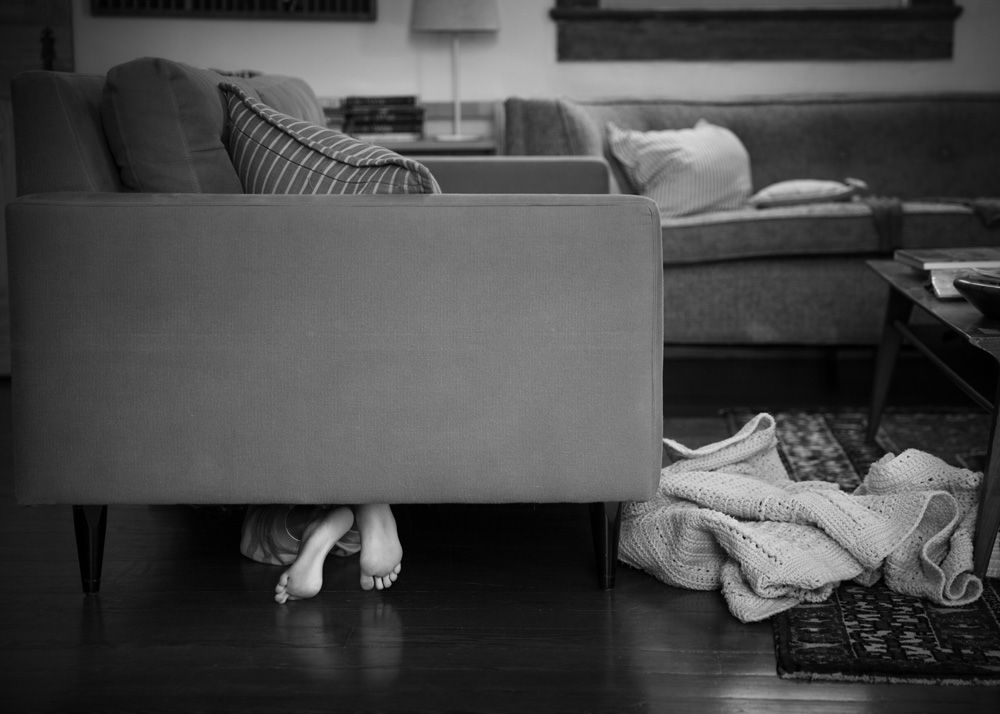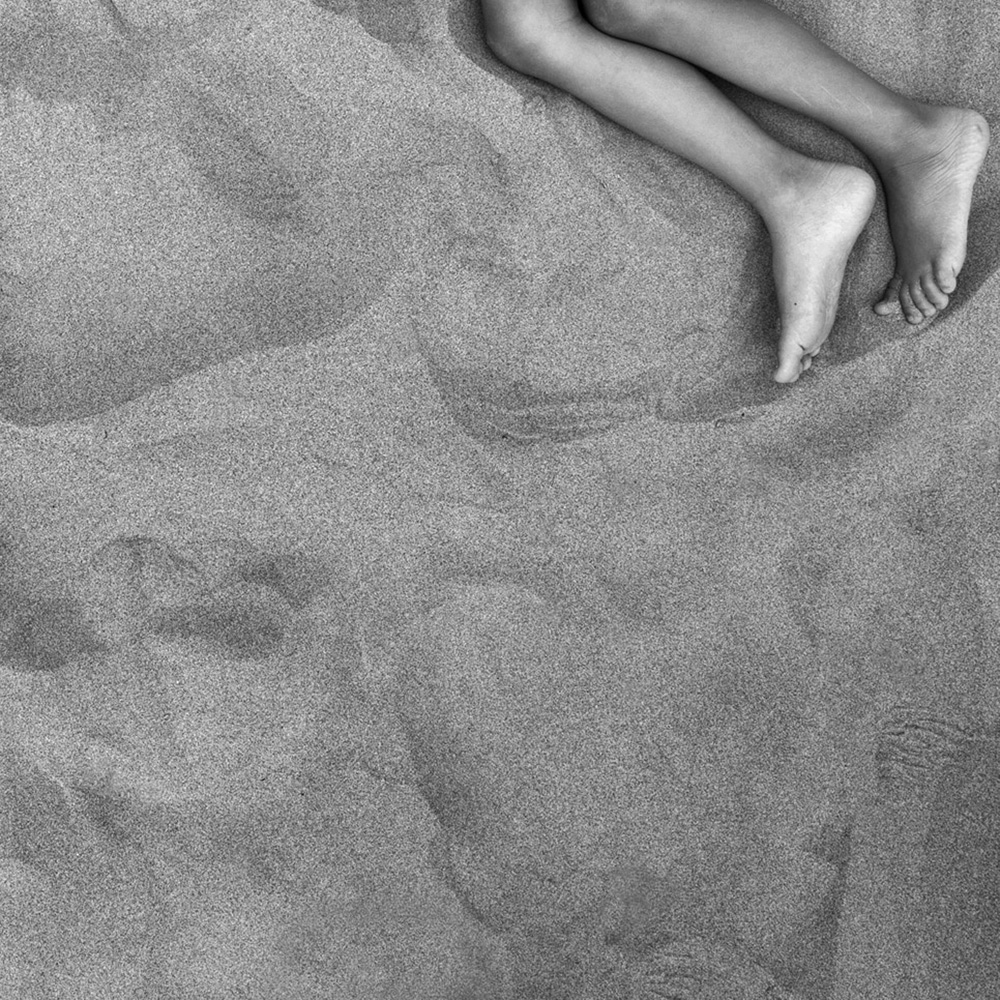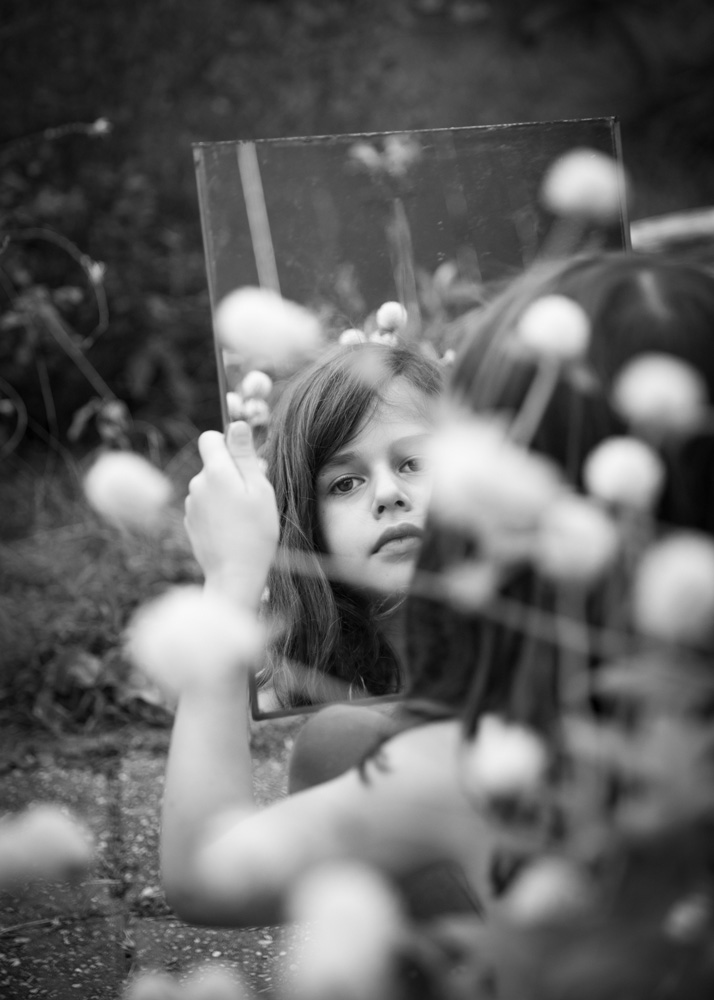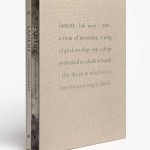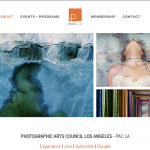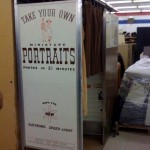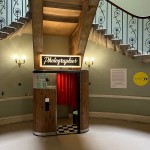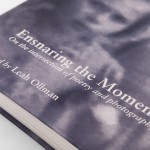Gloria Baker Feinstein and Abbie Brandao: The Next Generation
Photographer Gloria Baker Feinstein considers the impact of her life-long photographic focus on her daughter, Abbie Brandao, who is now, also a photographer. In today’s post, Gloria and Abbie interview each other and the images presented are of Abbie’s children, Gloria’s grandchildren. It should come as no surprise that they are favorite subjects for both photographers. – Aline Smithson
No one seems to recall who placed a Rocket Brownie in my hands shortly before my third birthday. Whoever it was gave me my favorite new accessory, something to loop around my wrist – like a fancy bracelet – and wear wherever I went. I started looking more closely at my friends and family (even my toys) to see if they’d be good subjects for one of my pictures. Having my own camera meant the world to me, and I moved about confidently with it by my side.
So I gave one to my daughter, Abbie, (an Instamatic) when she was just about the same age. She attached a red ribbon to it, tied it around her wrist, and promptly began her own love affair with making pictures. She took pictures of her travel, her toes, her friends, anything that felt important to document.
Soon after she was born, I’d opened a photography gallery. There were pictures by Arbus, Cartier-Bresson, Levitt, Evans, Kertesz, and Doisneau swimming just above our heads for many years. There was lots of conversation about them, too.
I’d made photos all through high school; so did Abbie. I studied photography in college. So did Abbie. Photographs have always been part of our language and our landscape.
We have both always loved making pictures of children.
So when Abbie presented my husband and me with our first grandchild, it didn’t take long before I pointed the lens in his direction. I began a new body of work called “Grandmother with a Camera,” a project that’s now almost ten years old, and into which I have welcomed two more grandchildren. Photographing these three little humans has enriched my relationship with them. It has also brought me closer to their momma because she and I now share favorite subjects.
Abbie says she photographs her children as a way of confirming their importance. I get to add another layer to that, as I’m confirming the importance not only of her children, but of my child, as well.
Abbie Brandao graduated from Yale University with a B.A. in art. She worked for several years as an elementary school teacher before staying home to raise her three children. She lives in New Orleans where she works as a family photographer.
Gloria Baker Feinstein received a M.A. in Photography and Graphic Design from the University of Wisconsin. Shortly after graduation, she gave birth to both Abbie and the Baker Gallery, the latter being a gallery in Kansas City devoted to 20th century fine art photography. After living 38 years in Kansas City, she and her husband, Eddie, relocated to Portland, Oregon, where Gloria continues to photograph.
Gloria: What is your first memory of making pictures?
Abbie: The first thing that comes to mind isn’t a memory of a particular moment, but a collection of memories about my first camera. That Instamatic must have been very important to me, because I vividly remember everything about it. I remember the feeling of trying to squint one eye while I held the other to that tiny, square viewfinder. I remember the feeling of trying to apply just the right amount of pressure to the shutter release to make it snap. I remember the exact feel and sound of winding the film with that little silver lever, and the surprising pop of the back flying open when I released it to change the film. It all felt so special and magical.
Do you remember giving me that camera? How did you feel seeing me take my first photos?
Gloria: We were getting ready to take a family trip to the south of Spain and France. I was curious to see our travels through your four-year-old eyes, plus I had a feeling you’d love recording what you saw. You had attached a red ribbon to the camera and wore that little Instamatic around your wrist wherever we went. I felt such a personal and unique bond as I watched you frame the people we met and the places we explored. Each night in our hotel room, you’d write about where we’d been, what we’d seen, what we ate, etc. You pasted in menus, museum maps, and postcards. You left room on each page for your photos as I’d told you we’d have to wait until we got home to have the film developed. I still have that scrapbook. The little square photos that you glued to the pages reveal what felt important to you: trees, street signs, curbs, cobblestones, flowers and the like. The ones I love the most are of Dad and me. From your perspective, we towered over you, of course, but there’s a sweet sense of connection and camaraderie.
I know you gave cameras to your kids recently. Have you learned anything about them from the pictures they take?
Abbie: Definitely. It’s a lovely little window into their worlds. I’ve learned more about what they cherish (their dogs, their stuffed animals, tiny treasures, each other) and what they find interesting or beautiful (moss, sunsets, flowers, blueberries). I’ve learned that they often use photography to lessen the sting of loss; to varying degrees, they have strong feelings about documenting things that are about to disappear. I actually don’t think my reasons for taking photos are all that different from theirs.
Do you still have any of the photos you took as a child? When you look at them now, what do they say to you about what you were like then?
Gloria: I do have some of the pictures I took as a child. What amazes me is that little seems to have changed with regard to composition, framing, and subject matter. Some look like I could’ve taken them yesterday! The pictures make it pretty easy for me to imagine what I was like as a kid; I think I was pretty similar to who I am as an adult. I was interested in documenting and preserving what I felt was meaningful, i.e. my family, my friends, and my toys. It’s obvious I was fascinated with people. Not shy, maybe a little bossy (hey, stand over here, hey, look this way!). Not much has changed.
Photos have helped me make sense of people and places for as long as I can remember. Is that true for you, too?
Abbie: I think it is. The act of photographing something is usually the result of a sudden instinct more than any measured decision, but looking at the photos later certainly helps me to make sense and make stories out of the things I’ve experienced. It’s hard for me to slow down in real life. Taking photos lets me return to babies who have grown up into kids, phases that have passed without my realizing it, places we’ve been together. When I return, I can rethink, and, as you said, make sense of things.
I think when I was a teenager, photography helped me to make sense of myself. With so many other things that felt hard about those years, photography was like a secret superpower. I especially loved the magic of working in the darkroom with you.
I know you had a darkroom in your childhood home. Can you describe what it felt like to be in that space?
Gloria: I learned how to use a darkroom at camp the summer before 7th grade. Who knew you could be in a dark, quiet, dreamy place and make such cool stuff? I loved the smell of the chemicals and the warm glow of the safelight. It’s great to hear that you have nice memories of us working in the darkroom together… feeling the magic of it just like I did. It was wonderful to share that with you.
For me as a young person, being able to head down to my own darkroom in the basement of our family home was actually quite empowering. In my mind, my darkroom skills set me apart from others, sort of like the “secret superpower” you felt you had. For me it was the first time I ever knew things my parents and older brothers didn’t, which was thrilling to say the least. As I began to want more alone time as a brooding teenager, the darkroom was the perfect place to get away from everything and everyone. I took great delight in having “a room of my own” where I could crank up the music and fully immerse myself in the creative process.
I have always considered photography simply a part of what I do, who I am. Do you feel that way, too?
Abbie: I do consider it a part of my identity. I think because it’s something I’ve always done that not everyone else around me did, and because it was a part of our family story, too. We had cameras and film and boxes of photos in the house; we had fine art photos on the walls and in big beautiful books. I’ve always felt grateful for the familiarity of photography. It’s something I can always turn to, that’s comfortable for me because I grew up doing it and seeing it all around me.
It was all around me not just at home but also at the gallery. I loved going there with you. What was the best part about being a gallery owner?
Gloria: The best part was being able to surround myself with work by some of the great photographers, like Kertesz, Cunningham, Cartier-Bresson, Helen Levitt, Arbus, and Siskind. I enjoyed introducing collectors to people like Marsha Burns, John Pfahl, Judy Dater, and Ken Josephson. But a close second to the “best part” of owning a gallery was being able to educate an enthusiastic community about the medium I’d always loved so much. The Baker Gallery was the first in Kansas City devoted to fine art photography. I opened it in the early 80’s, soon after you were born. It was a time when the art world (especially in the Midwest) thought of photography as the ugly stepsister to painting, sculpture, etc., so I had to become a real cheerleader. It was a heady time in my life: going regularly to the auctions in New York, bringing many well known photographers to Kansas City, providing a meeting place for (and exhibiting) local photographers, and helping start some significant collections.
Do you have many memories of the Baker Gallery?
Abbie: I do! I mostly remember sitting in different places, feeling important. I sat in the front windows, feeling important as I looked out on the world. I sat behind the counter, feeling important as I did the little tasks you assigned me. I sat in that back storage room, feeling important because I was amongst great, big, important pieces of art.
You sometimes talk about the photo gods giving you a gift when a perfect moment presents itself to you and your camera. Can you describe what that’s like?
Gloria: Yes! It’s the best feeling ever! Those photo gods and goddesses do look down on me every once in a while and lay out the most perfect arrangement. I do believe it’s my responsibility to be ready to notice it and be open to receiving it, but beyond that it really does seem like a gift. As I release my finger from the shutter in these instances, I get goosebumps and my heart seems to kind of skip a beat. This doesn’t happen often, but when it does, I mutter a little “thank you” under my breath and relish the fact that I was just treated to something very special.
I’m so grateful that we’ve been able to share the same passion all these years. It means the world to me to see the pictures you make, to share the language of photography with you. Photography has granted us a constant and deep connection. A mother can’t ask for much more than that.
Posts on Lenscratch may not be reproduced without the permission of the Lenscratch staff and the photographer.
Recommended
-
Linda Foard Roberts: LamentNovember 25th, 2025
-
Arnold Newman Prize: C. Rose Smith: Scenes of Self: Redressing PatriarchyNovember 24th, 2025
-
Spotlight on the Photographic Arts Council Los AngelesNovember 23rd, 2025
-
The Aline Smithson Next Generation Award: Emilene OrozcoNovember 21st, 2025
-
MATERNAL LEGACIES: OUR MOTHERS OURSELVES EXHIBITIONNovember 20th, 2025


